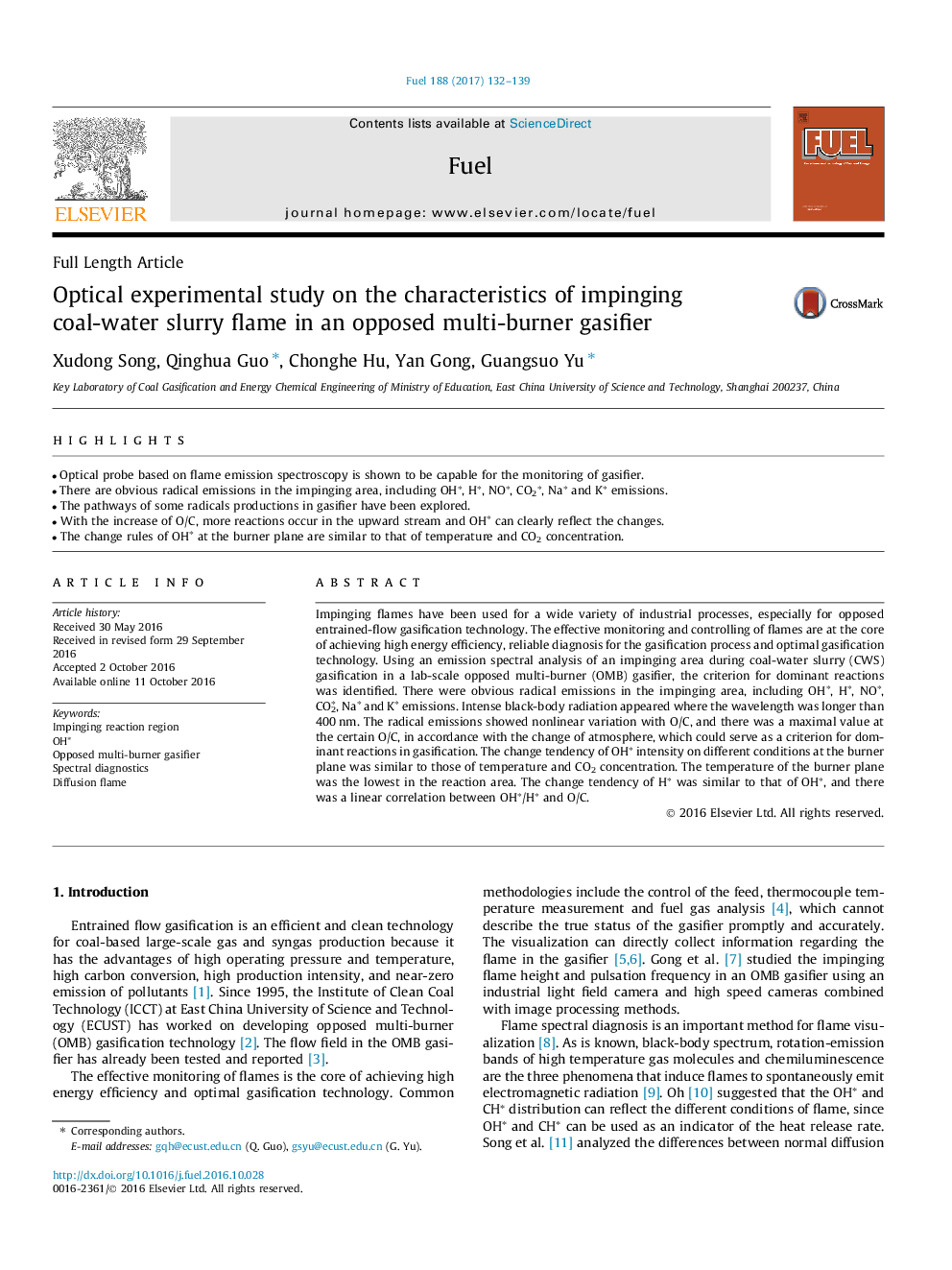| Article ID | Journal | Published Year | Pages | File Type |
|---|---|---|---|---|
| 6475746 | Fuel | 2017 | 8 Pages |
â¢Optical probe based on flame emission spectroscopy is shown to be capable for the monitoring of gasifier.â¢There are obvious radical emissions in the impinging area, including OHâ, Hâ, NOâ, CO2â, Naâ and Kâ emissions.â¢The pathways of some radicals productions in gasifier have been explored.â¢With the increase of O/C, more reactions occur in the upward stream and OHâ can clearly reflect the changes.â¢The change rules of OHâ at the burner plane are similar to that of temperature and CO2 concentration.
Impinging flames have been used for a wide variety of industrial processes, especially for opposed entrained-flow gasification technology. The effective monitoring and controlling of flames are at the core of achieving high energy efficiency, reliable diagnosis for the gasification process and optimal gasification technology. Using an emission spectral analysis of an impinging area during coal-water slurry (CWS) gasification in a lab-scale opposed multi-burner (OMB) gasifier, the criterion for dominant reactions was identified. There were obvious radical emissions in the impinging area, including OHâ, Hâ, NOâ, CO2â, Naâ and Kâ emissions. Intense black-body radiation appeared where the wavelength was longer than 400Â nm. The radical emissions showed nonlinear variation with O/C, and there was a maximal value at the certain O/C, in accordance with the change of atmosphere, which could serve as a criterion for dominant reactions in gasification. The change tendency of OHâ intensity on different conditions at the burner plane was similar to those of temperature and CO2 concentration. The temperature of the burner plane was the lowest in the reaction area. The change tendency of Hâ was similar to that of OHâ, and there was a linear correlation between OHâ/Hâ and O/C.
